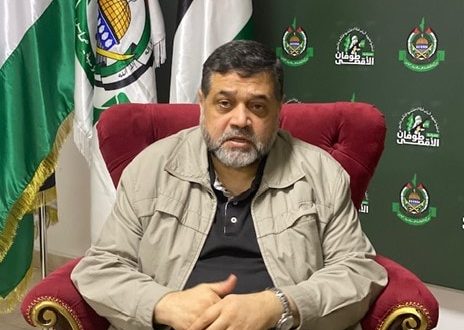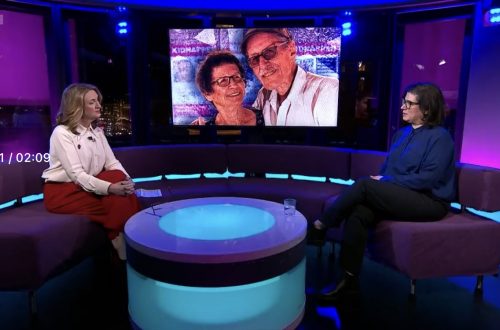This is a guest post by amie, who worked for some time as a defence attorney in apartheid-era South Africa
So the UN Human Rights Council has voted (only US, Netherlands and Italy opposed) to launch a “Goldstone II” enquiry into the flotilla fiasco. Who will step forward this time?
Some of the critics of the Goldstone report greeted last month’s “revelations” in Yediot Ahronot about Goldstone’s murky record as a judge under the apartheid regime as the silver bullet to put paid to the eponymous Report.
They are mistaken. Much as it irks me, when Polakow-Suransky said, “I see these attacks on Goldstone’s record as a distraction. Focus on the report,” I was inclined to agree with him. However. Distracted I have been since reading these latest polemics, as I was also a cog in the legal machinery under the Regime. It brought me back to the complex moral dilemmas of the time, and how many of them remain unresolved, for me and others. It sent me back to some of the famous debates of the time, to the Truth and Reconciliation Commission (TRC), and to Goldstone’s judgments to wonder if any of this has bearing on the Report.
The tone of the Yediot report is shrill. Like most people, I only have access to the Ynet summary; the full investigation seems only to have been published in Hebrew and is not available online.
Goldstone is labeled in the Yediot piece as a merciless hanging judge (for sentencing two black men to death himself, and upholding on appeal the death sentence on another 28) and slated for convicting youths for spitefully prosecuted petty political offences, and in a histrionic piece by Dershowitz, as the enabler of torture (for sentencing a youth to flogging).
Then there are those who support the Report no matter what:
[E]ven if in the future we discover that Goldstone was previously a Hispanic woman who sexually abused dolphins, it won’t make the information contained in the report any less accurate.
This begs the question whether on its merits the Goldstone Report on Cast Lead is fair and accurate. There has been ample serious analysis to satisfy me that it is not only inaccurate but a shoddy piece of work which willfully avoids swathes of evidence.
As fallacious as the silver bullet tendency is its reverse– the apologists and lionisers who argue: believe in the man and it follows you must believe in the report.
The Mandela defence
Several defenders have invoked the saintly imprimatur of Mandela; having served as a judge during the apartheid era, Goldstone was appointed by Mandela to the Constitutional Court.
In the saner parts of the world, they can trust Mandela’s conclusions about the judge, or they can trust Yediot Aharonot’s.
Anyone with the Mandela hechsher must be, like Madiba himself, unassailable.
This is the easiest argument to dispatch: Aside from many gestures of inclusion of dubious figures from South Africa’s past in the name of reconciliation, Mandela bestowed many repugnant honours: He awarded SA’s highest medal of honour to Suharto and Gaddafi in 1997.
This is from an interview with Mandela in 1998:
I was surprised that the president failed to see the irony in his statement that an ANC government, brought to power partly as a result of boycotts and sanctions, was willing to “do business with any regime regardless of its internal policies”. .. Amazingly, he gave as a model [of human rights] Saudi Arabia “where students enjoy benefits I have not seen anywhere in the world”. Saudi Arabia and Algeria, both of them serious human rights violators, are current clients of the billion-dollar white-run South African arms industry, the source of death and suffering in the region, and which has been reinvigorated under the ANC. On one of his visits to see the dictator of Indonesia, General Suharto, Mandela offered to sell him arms, too.
The interviewer? John Pilger (Suransky-Polakow, take note).
The Chaskelson defence
Chaskelson was appointed President of the Constitutional Court by Mandela in 1994 and then Chief Justice in 2000. He notes that Goldstone was regarded by everyone who knew him as a liberal judge, and defends some of the judgments criticised by Yediot as ones where Goldstone had no choice but to apply the law. He insists that Goldstone had used his judicial powers to mitigate the abuses of the apartheid regime. I will deal with some of these defences here and the rest in Part II.
Chaskelson himself never took office under apartheid and has an admirable record for fighting the legal battle as an advocate under the regime. There is a context to Chaskelson’s praise, though:
Chaskelson faced a dilemma about judges being held to account by the TRC. This is discussed by David Dyzenhaus, in his book “Judging the Judges,” substantial extracts available here.
Among the judges of the Old Order who continued in office under the New Order, there were only a small minority of so-called liberal judges. Dyzenhaus points out that Chaskelson in his role of judicial leadership had to resist individual scrutiny by the TRC of any of the Old Order judges and any of their more uncomfortable judgments, in order to maintain the fragile collegiality between the Old and New Order judges. This was regarded as essential for the new dispensation to work. Dyzenhaus notes that Chaskelson “clearly thought it unwise to dwell on judicial failings.” Chaskelson had written that “little was to be gained by lamenting the past”.
Nevertheless Chaskelson, in a joint statement defending Goldstone on 20th January 2010, does list some “good” judges in response to the initial furore about the Goldstone Report. Goldstone cites this statement in his response to the Yediot article.
Many of the names are indeed legendary, but there were some raised eyebrows at the inclusion of a couple of the judges on Chaskelson’s list among those of us who encountered them. My eyebrows were further raised by Chaskelson’s disclaimer that in defending Goldstone’s record, it was not his intention to express a view whether the findings of the Goldstone Report were correct or not: “Views differ”, he says. And yet he had already signed a statement a year before, on February 1, 2009, barely a month after Cast Lead, unequivocally condemning it as inhumane and disproportionate.
Hanging judge?
I balk at hanging this label round Goldstone’s neck. I have encountered those who qualify for the title in all its vileness and hope to post in due course about one such, Judge Theron, who made it his business to hang the 19-year-old ANC member Solomon Mahlangu. Goldstone does not appear in the generally-known rogue’s gallery of judges in which Theron is an undisputed member. Curlewis, another who merits the label, is cited on Wikipedia as saying that Goldstone was an abolitionist who could not be trusted to apply the death penalty routinely.
Of the small samples of Goldstone’s death sentence appeals I have read, there are some where he (sitting with two assessors) reversed the sentence by finding extenuating circumstances. In others, Goldstone explains that he had no choice, as in the absence of a finding of extenuating circumstances, the death penalty was mandatory. Notwithstanding his declared opposition to the death penalty, one of the Yediot-quoted judgments sits very poorly with this stance. Goldstone found that the young age of the accused, and the possibility of rehabilitation, were outweighed by the deterrent effect of the death sentence in this particularly heinous murder:
A proper sentence should act as a deterrent to others who may be tempted to murder or rob defenceless and innocent people… The murder calls for the maximum sentence allowed by the law. It follows in my opinion that on that account the only proper sentence is the death sentence.
Goldstone claims always to have been against the death penalty, but this statement sounds like a judge exercising discretion in the opposite direction rather than one who has no choice but to apply a rule which has closed off all other options to him.
Goldstone has declared: “[I]n my view, if a judge is to err, it should be on the side of defending morality…judges have a duty to act morally, and if they’re dealing with laws which have an unjust effect, I think it’s their duty – if they can, within the powers they’ve got legitimately – to interpret the laws and give judgments which will make them less harsh and less unjust.”
In this judgment and in several others, he failed his own standard. And in the end, of course, the men sentenced to die by the abolitionist are just as dead as those sentenced by any pro-death penalty judge.
For those who have no moral issue with the death penalty as such (I am unconditionally opposed) there is still a problem with its application in South Africa during the years of Goldstone’s tenure. One of my teachers, Prof Barend Van Niekerk, demonstrated in the 1970s that the application of the penalty was racially biased. He was prosecuted for contempt for publishing his research, acquitted once and convicted once.
Under the old regime in South Africa, a non-mandatory death penalty could be applied for an extensive range of crimes and political offences other than murder; but even for murder the defence of those charged was mostly relegated to advocates fresh out of law school. My learned spouse’s (MLS) first entries in his accounts as an advocate consisted of rows and rows of the figure R21 (then equal to £10.50). That was the pro deo flat rate fee per capital case paid by the government– a risible amount even in 1974. And he at least had the experience of a period of pupillage, introduced for the first time for qualification as advocate in his year.
The harrowing account by Paula McBride before the TRC of the processing of executions contains further submissions and statistics which confirm Van Niekerk’s findings of racial bias in applying the death penalty.
This is not to say that Goldstone himself applied it in a biased way but that was the institutional framework in which he operated and, given his statement above, to which he gave credence.
The TRC in its hearings into the role of the legal profession in the apartheid regime concluded that:
The judiciary… willingly participated in producing the highest capital punishment rate in the ‘Western’ world by the mid-1980s and an execution-rate that impacted overwhelmingly on poor black male accused.
Flogging as torture?
This charge struck me as overwrought. I wondered if any readers who experienced caning in the English school system regarded this at the time, or even now that it is outlawed and recognised as barbaric, as torture. And yet… I am still haunted by those late afternoons in magistrate’s court when the hubbub had settled to a quiet drone… that was the appointed time for the meting out of those sentenced earlier in the day to up to 10 strokes of the cane. Many clients were relieved and delighted they had not received a jail sentence. But the quiet was broken at that time by the yells of the flogged rising up the the stairwell of the dock from the cells below: Yoh Yoh Yo-o-oh, they wailed. And those like me, who sat in court, bit our lips then continued cross examining– we were all complicit, were we not?
The progressive judge?
The TRC refers without naming them to the very few who “exercised their judicial discretion in favour of justice and liberty wherever proper and possible.”
Goldstone himself noted in 1992 that most South African judges “applied such [apartheid] laws without commenting upon their moral turpitude.” A number, which some claim includes Goldstone, were more outspoken– a policy that he felt aided the credibility of the courts.
Did he live up to his own precept? Certainly in Govender, the case cited by Chaskelson and others, he did. Thanks to his interpretation of the law, “the state’s campaign to enforce the Group Areas Act in Johannesburg ground to a halt.”
There was another case where I admired the courage and innovation of a Goldstone judgment.
This cause celebre involved a young doctor, Beverly Traub, at the hospital for Blacks, Baragwanath. A hundred and one doctors signed a letter published in the SA Medical Journal detailing the “disgusting and despicable” conditions at the hospital. The authorities demanded the doctors apologise. The majority did and were appointed, whereas Dr Traub refused and was turned down for a senior hospital post she had been due. Goldstone found she had not been given a hearing before being rejected, and ordered her immediate appointment.
Appearing for Dr Traub was MLS, his last major case before we left for the UK. One of our reasons for leaving South Africa was weariness with fighting for human rights in the courts as the noose of ever-growing statutory constraints increasingly strangled any room for successful intervention. Goldstone’s judgment left us elated, but rereading it, I see we were perhaps unduly impressed and grateful for modest crumbs.
The newspapers headlined the appalling conditions revealed and reported the responses cited in the court documents of the deputy director of Hospital Services. He blamed the foul conditions on the fact that “these people breed too much”. He said blacks were not the same kind of human beings as whites. They were a “substandard group with sub-standard requirements, who slept on the floor at home and didn’t need beds in hospital. He said it was official policy not to improve facilities at Bara until blacks contributed more to the economy.
As this was an urgent application on the papers with no oral evidence being heard, the judge was obliged in law to proceed as if the authority’s version of the facts was correct.
Was Goldstone able to comment on the moral turpitude of the condition of the hospital or of the director’s shocking alleged remarks?
Perhaps not, but nor was it necessary to use such ingratiating language in his argument that the authorities ought to have given Traub the opportunity of a hearing before rejecting her.
Goldstone accepted that “one could conceive of many advantages to be gained by hearing the other side. This could well be such a case. The language used by the author of the letter to the South African Medical Journal may have been unnecessarily extravagant. Some of the allegations may be unfairly critical of the Administration or of the respondents. Yet, on the other side, the official… may well take into account… that other of the criticisms were well-founded, that the staff may have had to practice under conditions which were overcrowded and unsatisfactory and which cause great frustration.”
Dr Traub went on to become an eminent rheumatologist who even recently advocated and won a case for her patients against medical aid refusal to pay for certain drugs. But the case did not dent apartheid and the only improvements at the hospital from the publicity were some conscience-stricken private donations.
In the judgment, the underlying cause of the awful conditions dared not speak its name.
After all this, the deeper issue goes beyond the content of Goldstone’s judgments, to the question of whether he should have accepted the appointment as judge under the apartheid regime at all. The debates around that, his justifications and what effect his moral dilemma might have had on his pattern of thinking in the Goldstone Report will feature in Part II.


